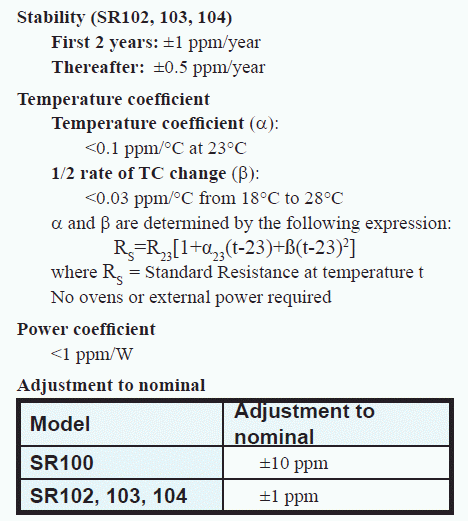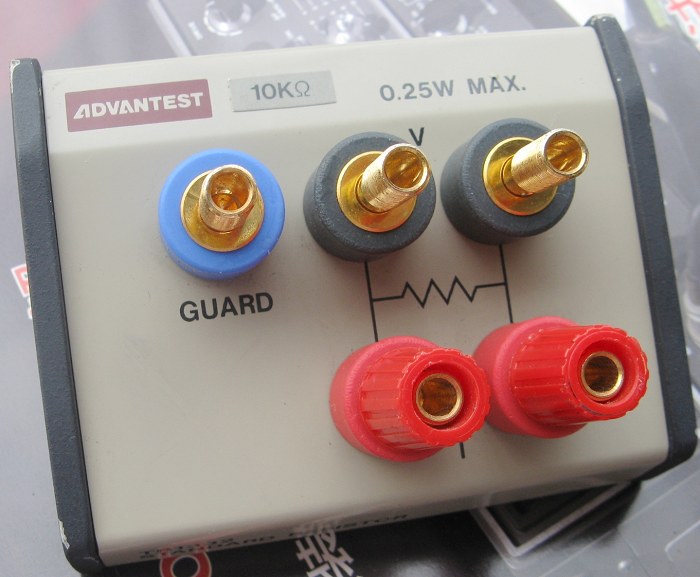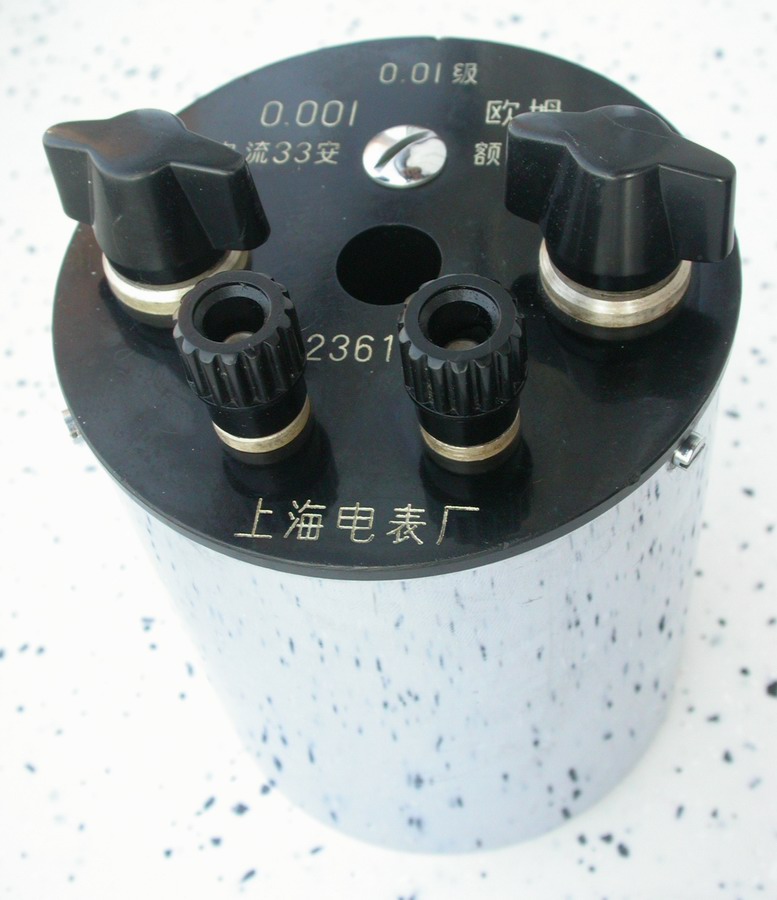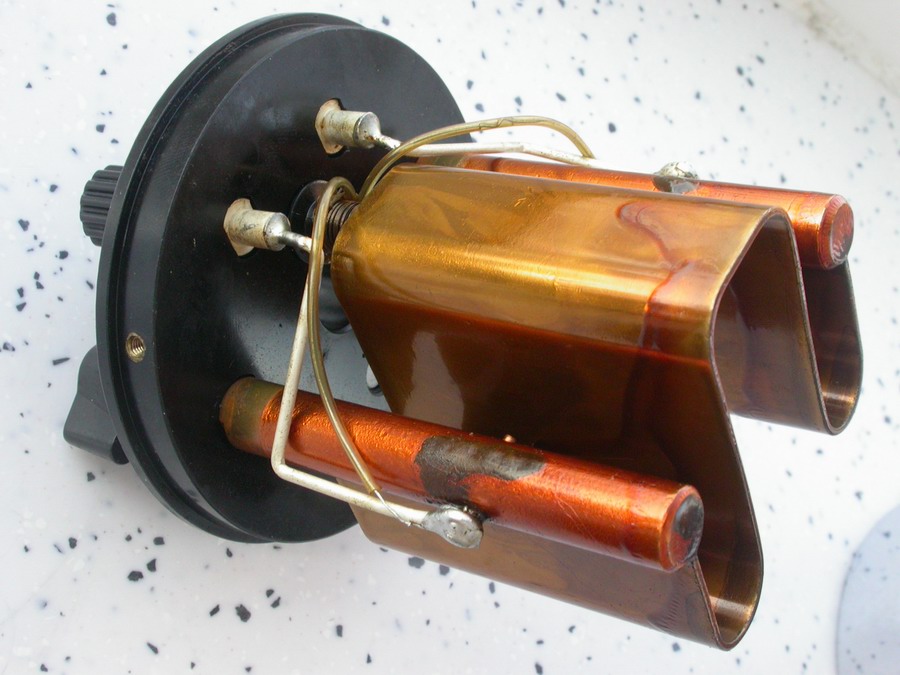I've been fascinated by standard resistors of their performance, cannot stop thinking of what's on earth inside.
Before teardown, let's look at some of the important factors of a standard resistor, such as specified by esi SR104:

- Stability
Specified as ppm/year, It is a long time factor that most important for a standard resistor.
Every Chinese and Japanese resistor has a CLASS, they classify them according to annual drift.
- Temperature Coefficient, alpha23
This is the slop of the temperature chart at 23 deg C, in ppm/C. Because the temperature chart is curved for most resistors, alpha varies with temperature. That's why it has a subscript specifying at what temperature the alpha is measured. Also, for standard resistors that often used in lab environment, they don't specify or test in large temperature range. Normally 18 to 28 degree C is suffice.
- Temperature Coefficient, beta
The unit of beta is ppm/C2(per sq deg C), not ppm/C as above spec. The temperature chart can be roughly represented by a quadratic curve, this is especially true for standard resistors where the temperature range is limited. This beta is the coefficient(constant) of the second order equation. The larger the beta, the more the curvature. Most of the metals and resistors have negative beta(parabolic shaped). If a WW made of manganin, the beta is usually -0.6ppm/C2, If made of evanohm the beta usually around -0.028ppm/C2. Foil resistors often have even smaller beta.
- Power Coefficient
Represent in ppm/Watt. This parameter depends on how heat dissipated and also related to tempco.
- Adjustment to nominal value, ppm
Its the deviation from nominal value at the time of being made, or may call it initial error, initial accuracy.
One thing also worth noting is that when people measure a standard resistor by a DMM, the standard resistor is superior in most of the cases even the DMM is a 8.5 digits. Most of the imperfection/noise/instability in the test results are probably from the DMM rather than the standard resistor.
ADVANTEST 10k, find no spec, 1 hermetically sealed WW resistor inside.


Chinese BZ3, 0.001 Ohm, class 0.01%, manganin.



Remarks: This is one of the nine BZ3 resistor set, 0.001 Ohm, max current 33A, everything is heavy from binding post, thick manganin stripe. There is a small compensation resistor in parallel with the main.
esi SR104, 10k, stability 0.5ppm/a. Oil filled, hermetically sealed evanohm WW in a stainless steel container.





What can I say, the best 10k resistor ever made. Pity that no further teardown.